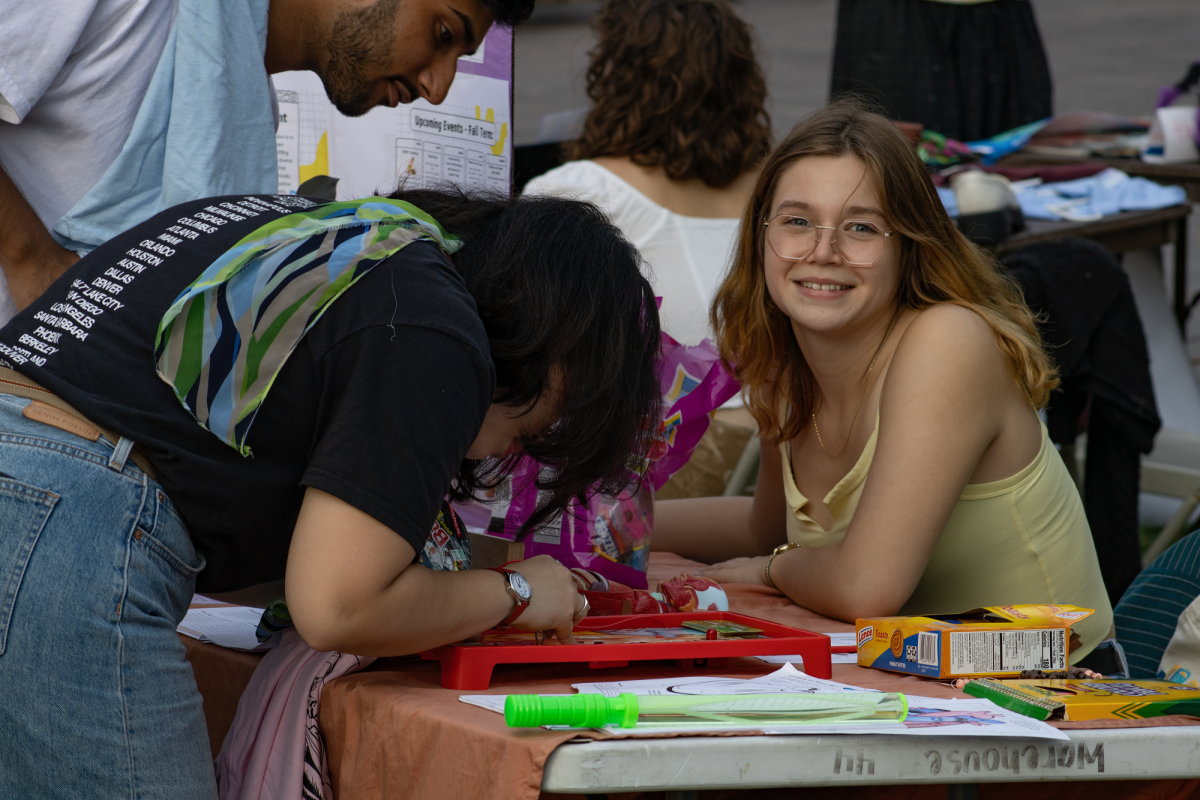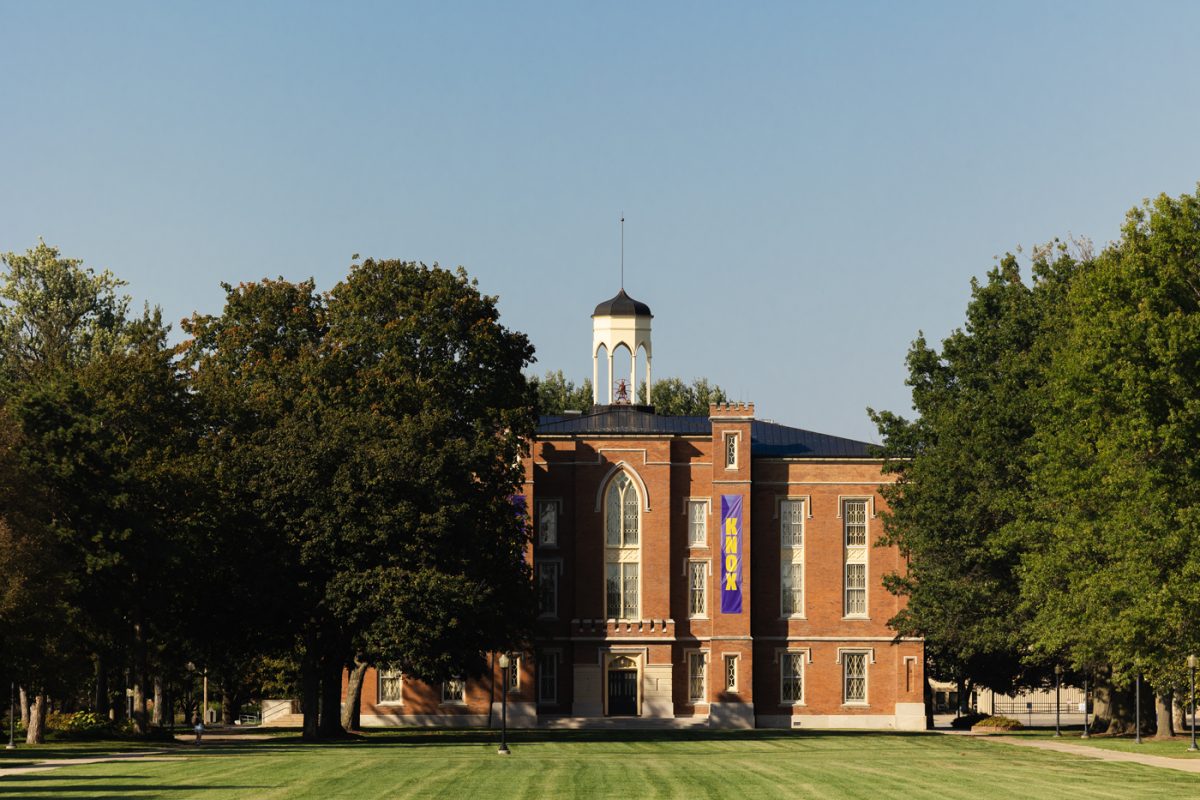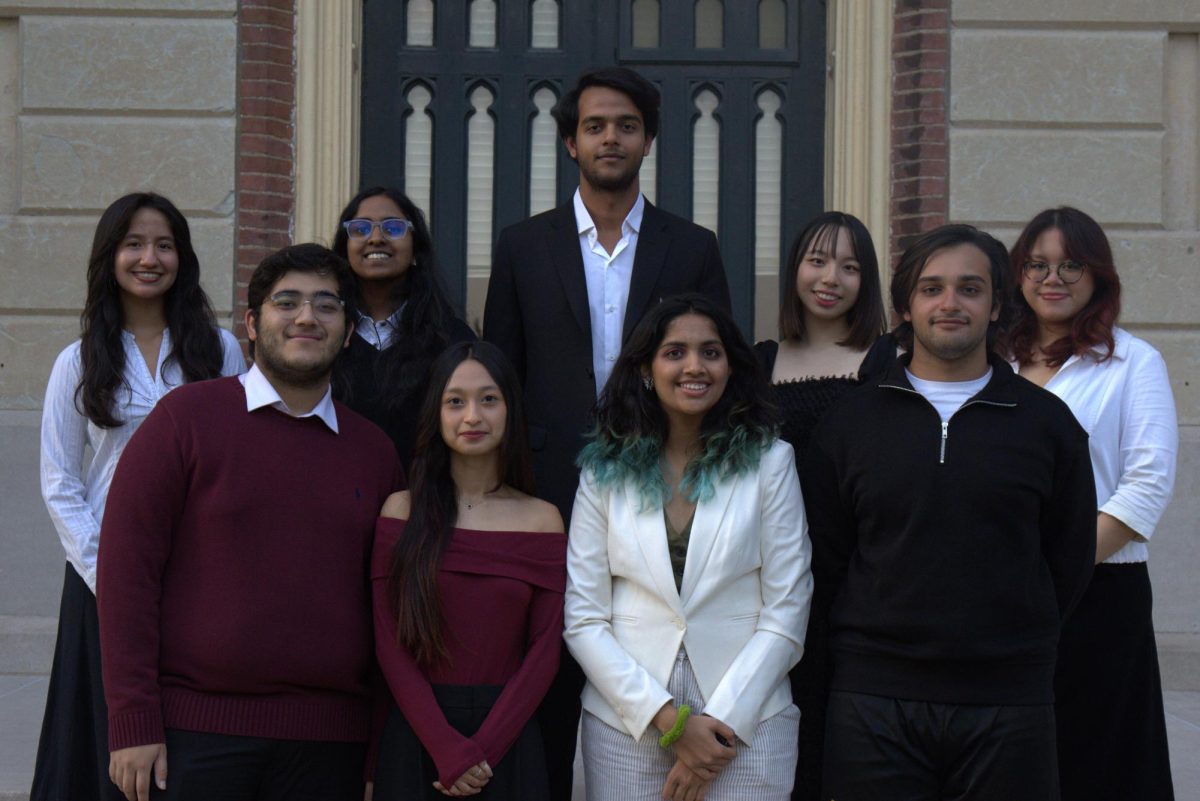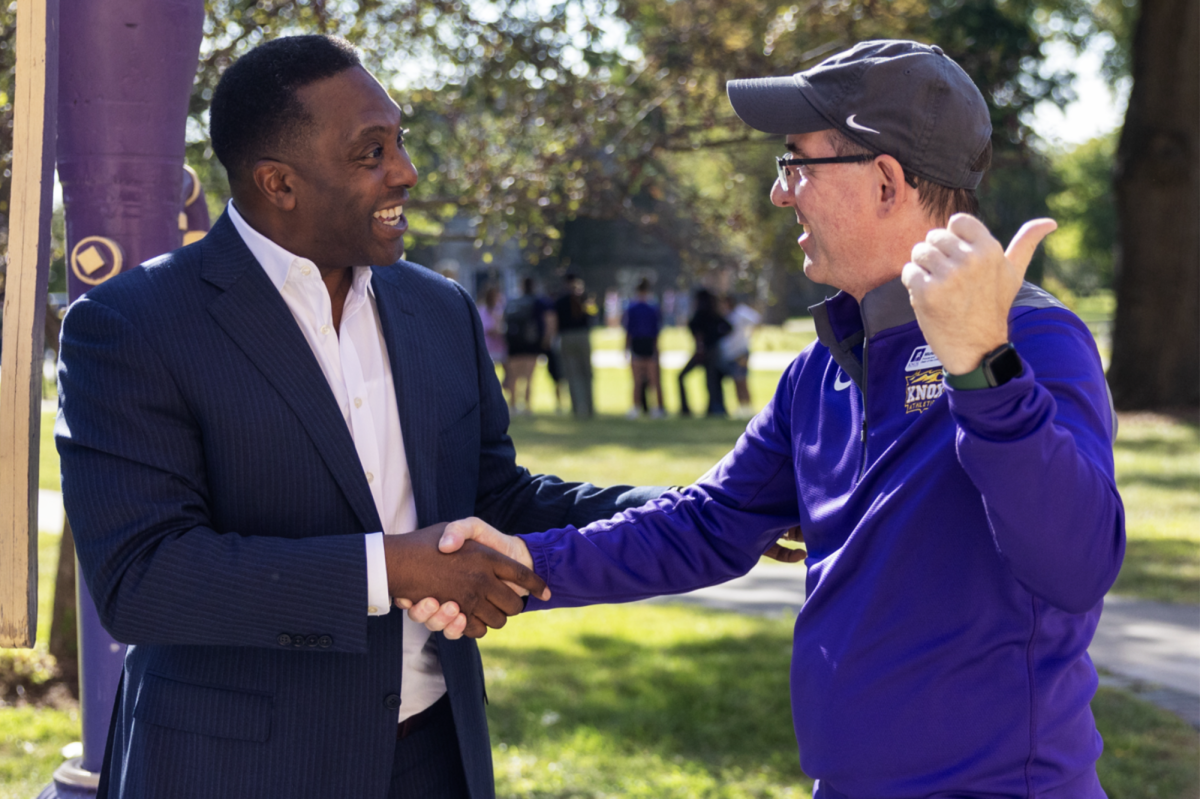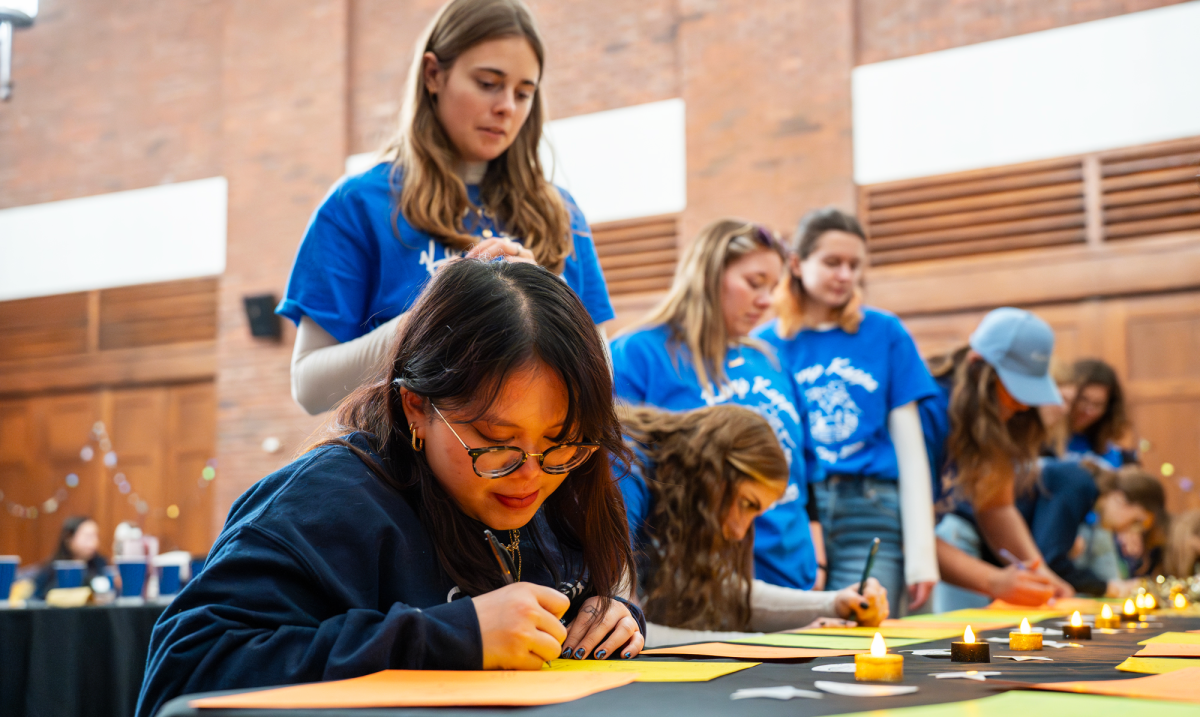With 108 clubs registered on Engage, and 864 students housed on campus this term, how much involvement is needed from Knox students, in order to fulfill the organizational needs of campus?
The ‘normal’ level of involvement amongst students inevitably changes between schools. At Knox, of 120 students polled via asking random students “How many organizations are you involved in on campus,” the average number of organizations a student is involved in this term was three. 120 students is a representative 13.8% of the campus’s population. Seventy-five percent of the students polled were involved in at least two organizations, but another 24.1% were in only one or zero organizations.
Often, this response came from students with less than five organizations, but as the number of organizations a respondent was involved with increased, students confidently responded with numbers like nine, thirteen, and sixteen..
Among another 58 students surveyed for their number of jobs on campus, students held an average of two or three jobs, alongside multiple organizations.. With this, the average number of jobs and organizations held on campus by one student is two jobs and three organizations.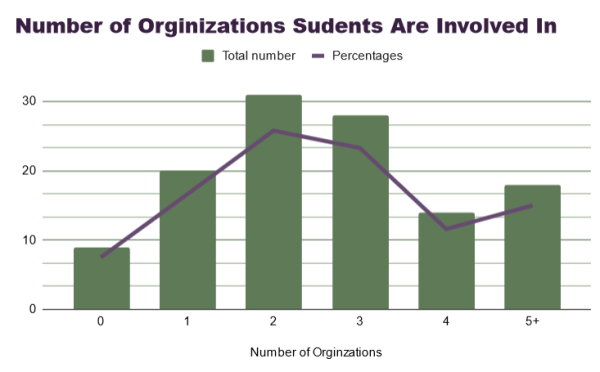
Junior Josh Carlos perceives a normal amount of involvement to be three organizations outside of work, which is supported by the data gathered. However, overinvolvement can look different for different people based on factors like energy levels. Carlos believes that a major factor is having to choose between activities.
“[Overinvolvement is] when you’re involved in too many things and you have to start picking. When you’re constantly having to make the choices about the events and things you want to go to on campus. […] There’s no separation between personal time and other time. Like when you lose the ability to say no to things. […] That fear of missing out, you know,” Carlos said.
Personally, Carlos is involved in four activities. While he makes connections and is able to enjoyably pass time in DnD club and a WVKC radio show, Carlos finds his service based activities, like Blessings in a Backpack and being an Resident Assistant (RA) rewarding because he is able to do good. His most time consuming activity is being an RA, which he believes has attracted already involved students.
“I hang out with RA’s dawg. All of us are busy. I mean I know a lot of people who are in leadership positions, like I have friends who are presidents and most of my friends are all on execs of things. Like most of my friend group are student leaders, or an exec in a club. And we’re all taking hard classes too,” Carlos said.
Junior Kiely Thompson is another one of these RA’s. Outside of this role, she represents a long list of clubs, organizations, and offices on campus.
“So I’m a Resident Assistant, including being a Duty RA. I work in the Admissions office as a tour guide. I am a lifeguard, and I work as a Chemistry TA, mostly for labs. Outside of work, I do [Intervarsity Christian Fellowship], I am in the Flute Choir, String Arts Squad, Chemistry club, Dungeons and Dragons club, Book club. I am a part of the Honor Board, I am in sorority life – I’m in Kappa Kappa Gamma. I think that’s it,” Thompson said.
Thompson considers herself to be over involved compared to her classmates, but like Carlos, is equally involved as her friends. Despite her high level of involvement with nine organizations alongside her five jobs, Thompson does not get overwhelmed by her activities.
“I feel like they’re secondary, mostly it’s just like running background tabs of what else I have to do in the day or what’s coming up. It’s not consuming me,” Thompson said.
Thompson finds her balance through having her activities, “meticulously planned in my google calendar.” Carlos shares the sentiment of the delicacy of balancing multiple activities on top of school, however he, like other students, finds it difficult to maintain balance.
“There’s not enough time in the day for other stuff, because I have so many things to do on campus all the time it’s hard to do things like homework, or hang out with people. Sometimes when you’re doing things like orgs it weighs more on you as a person and so it’s hard to get away from it sometimes. […] I don’t know the analogy to use but it’s kind of like a honeypot, where you’re stuck in it for a while,” Carlos said.
Even though Carlos sometimes finds himself stuck in his level of involvement, he does not necessarily want this to change.
“I like to believe my activities are secondary, I like to think that at the end of the day I would choose myself. […] I like to think that I could stop at any moment but it feels rude to do that. In some sense I guess I am addicted to being busy, I don’t like having downtime,” Carlos said.
With three clubs being considered normal and statistically the average, the expected level of involvement is substantial. Some parts of campus, like the RA staff have more trends of overinvolvement.
“I mean I think there’s really like a culture here of having no downtime. like you’re either in a club or you’re involved in something. [Knox] just pushes us from orientation onwards, like [your] RA, engage, posters all over the place- I don’t really think there’s anywhere on Knox where you can’t find a poster, you really have to go looking,” Carlos said.
Junior Aurora Valenzuela agrees, but does not believe this overinvolvement culture to be negative or positive.
When asked about her opinion on if this culture of over-involvement exists on campus, Valenzuela said, “Yeah, I guess. [It exists] a little bit. Not necessarily in a negative or positive way.”
Thompson sees this culture arising from students striving for change and support.
“The campus is always driving to make a change, and so everyone is always involved in something. Especially with all the emails that we get to do this and do that and join this. And all that. There’s just so many events, and when you add that on top of eachother, it’s hard to go to everything, but like all of your friends are in something that’s different from your thing so you try to go to support your friends and it becomes a lot of commitments,” Thompson said
While there may be a culture of over involvement at Knox, not every student is overinvolved. Valenzuela keeps her involvement low, but is still part of both Blessings in a Backpack and classics club.
“One is in my major and the other one everyone else [in my friend group] does,” Valenzuela said.
Senior Ellie Courtemanche thinks that students are over-involved. She believes it is a result of lower enrollment numbers causing a strained effort to maintain the same level of activity on campus as there was prior to Covid-19, when there were more students.
“This campus is half its size, trying to support the same number of clubs that we had when we were the full 2,000. […] Everyone is doing double the work just to keep things alive,” Courtemanche said. “It’s not sustainable.”
The statistics are on Courtemanche’s side. If each organization at Knox had an equal number of students, there would be eight students for each 108 organizations. In most Knox organizations, that is enough for just the Executive board, without any other non-executive members. With this in mind, it is unsurprising to know that students are involved in more than one organization at a time. Members have to come from somewhere.
This year there were more organizations than ever before. The titular org fair, held at the start of every year to showcase and display the various different clubs on campus had a ‘first come first serve’ policy due to having more clubs than tables available.

